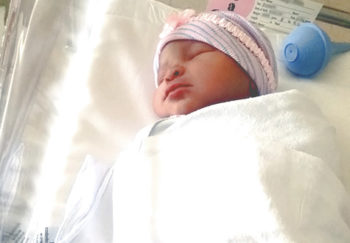
Every expectant mother is anxious about labor. The pain, the ‘what ifs,’ the lack of control over all of the things that may happen. Many times, even if a mom does everything to prepare for a vaginal birth, she may have a cesarean birth, or c-section, instead. Then, when pregnant a second time, there’s the question of a VBAC.
What is a VBAC?
After the cesarean, when it comes time to have her next child, the mother still has the option to deliver vaginally. A vaginal birth after cesarean, or VBAC, is a viable option for many pregnant moms, and something that UVA obstetricians will offer to the right candidates.
“I would want to know why she had a c-section the first time,” says Annelee Boyle, MD, an OB-GYN. “That would help us determine her risk and if she is a good candidate. In appropriate candidates, I would absolutely encourage a trial of labor (or TOL) after cesarean if the patient is fully informed on the risks and benefits.”
A trial of labor is an attempt to have a vaginal birth after a cesarean. If the TOL is successful, the mother will have a successful vaginal birth. If unsuccessful, the labor will result in another c-section.
The Pros of a VBAC
Having a successful VBAC can help reduce recovery time for mom and baby. Babies who enter the world through the birth canal are exposed to additional bacteria that may help protect them from health issues as they grow.
There’s also more and more risk with subsequent c-sections, so a successful VBAC can help a mom with any future pregnancies.
Who Should Consider a VBAC?
But not everyone is a good VBAC candidate. Boyle says the biggest factor is the reason behind your first c-section.
A candidate for VBAC usually had “a c-section for what we could call a non-recurrent indication,” Boyle says. “Somebody whose first baby was breech or whose baby didn’t tolerate labor are better candidates than those who tried to have a vaginal birth but were unable to push their baby out after multiple hours.”
Moms who have had more than one c-section may not be good candidates for VBAC, since the scar from the incision might be weak and more likely to rupture during labor. Also, moms who have vertical scars, rather than horizontal scars, can’t have a VBAC, since the scar is likely to be weaker as well.
The good news is that a TOL is treated similarly to a traditional vaginal delivery. A mom can have an epidural, IV pain medicine or nitric oxide to relieve the pain of labor.
What Are The Risks of VBAC?
Are you pregnant?
Find out more about giving birth at UVA.
Since a trial of labor does require some extra care and caution, it is considered a high-risk delivery. Caregivers will monitor a mom attempting a VBAC closely throughout labor to ensure the baby is moving through the birth canal.
A uterine rupture is a very rare complication that happens to 0.8-1.5 percent of pregnant mothers attempting a VBAC. If this happens, the baby could be expelled from the uterus and cut off from the mother’s blood and oxygen supply.
“A uterine rupture is considered a surgical emergency,” Boyle explains. “But UVA has amazing support. We have OBs, anesthesiologists and pediatricians in-house 24 hours a day, so no matter what happens we can provide the baby and the mom great care immediately no matter what the situation.”
Can You Increase the Chances of a Successful VBAC?
“It depends on their age, race, BMI and the reasons for first c-section, but the range for successful VBAC is anywhere from 20-80 percent,” explains Boyle. “There’s some calculators that the OBs can use that can individualize each woman’s success rate.”
If a VBAC is unsuccessful, the result is another c-section delivery.
Boyle suggests that moms hoping for a successful VBAC have a conversation with their obstetrician. Explain your obstetric history, and let your physician explain the risks and benefits. Women who stay within the recommended guidelines of weight gain throughout pregnancy also have a better chance of having a successful vaginal birth.

